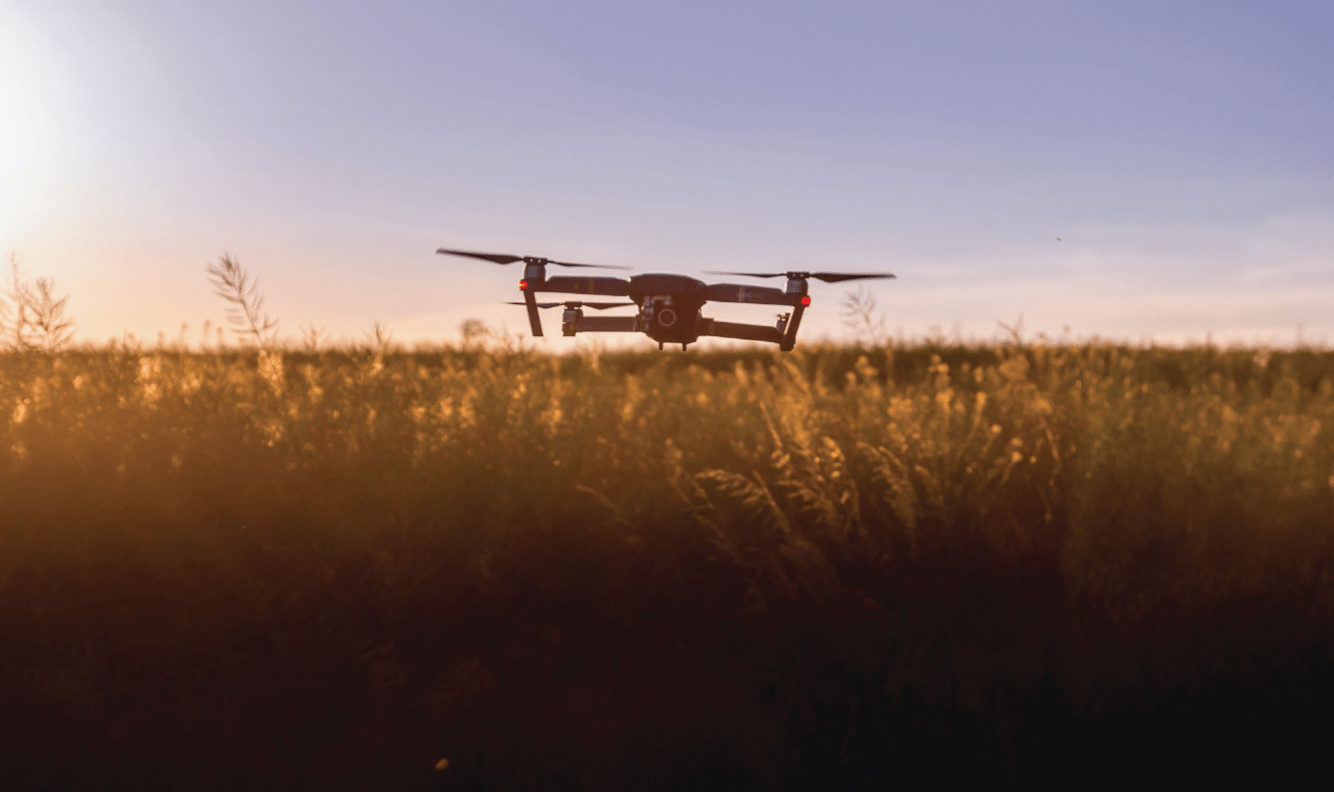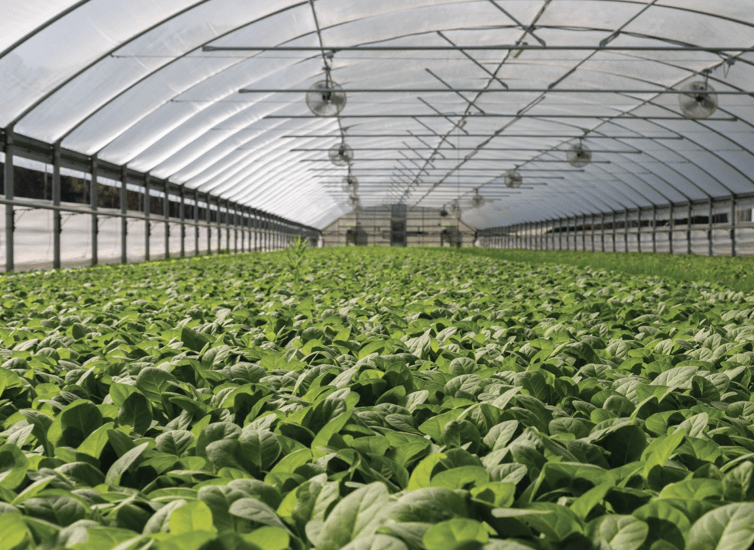Not Your Grandfather’s Farm: Canada’s Agtech Innovation Opportunity

One of the cultural gaps that persists despite our small-world connectivity is the lack of refreshed knowledge about agriculture and farming among the broader population. We think about where food comes from more than we did in the days before “farm-to-table” and social media images of bucolic farm life. But today’s farmers are truly redefining agriculture, from the ground up.
Victor T. Thomas
Agribusiness in Canada has changed dynamically in recent decades. Our farmers have been innovators and changemakers in a globally competitive market, yet the Canadian public seems to know little about this transformation. In fact, a 2019 study by the Canadian Centre for Food Integrity (CCFI) revealed that 91 per cent of Canadians did not know enough about modern agricultural practices. Yet, many have preconceived notions of what a Canadian farm
looks like.
The famous book series and TV show Little House on the Prairie often comes to mind, as the popular stereotype of life on the farm as quaint and romantic. A less friendly misperception assumes Canadian farmers live and work in pre-modern environments, using horse power and aging equipment; others picture farmers as less educated and less sophisticated than city dwellers. But these stereotypes couldn’t be further from reality. Canadian agri-food has developed into a robust and competitive world player that yields $120 billion annually. It employs more than 12 percent of Canada’s labour force and constitutes seven percent of the economy. The most fascinating part is that the sector has been growing at a rate nearly 30 per cent greater than the national economy.
Canadian farms and ranches are becoming centres of technological sophistication and cutting-edge innovation. The farmer of the future is skilled in data analytics, computer science, autonomous farm drones, communications and management: new farming pioneers are emerging. Last March, the Globe and Mail featured Kristjan Hebert, referring to him as “the epitome of the 21st-century Canadian farmer.” Herbert manages 26,000 acres in Southeastern Saskatchewan. His farm produces grain and oilseed using tech data and wireless connectivity for nutrient management and disease control. He is a Chartered Professional Accountant with a Bachelor of Commerce degree. He is on the Speakers Bureau of Canada’s expert roster and lectures regularly about innovation and sustainability.
The development and application of agricultural technologies (agtech) for farming are at the cutting edge of the digital revolution. Agtech supplies data, imagery and real-time information that helps with management, increases productivity and boosts environmental sustainability. It uses blockchain, artificial intelligence, advanced sensors, imaging and drones to monitor cattle, inspect crops, track moisture levels, and deliver fertilizers and pesticides on crops with great results. Precision agriculture gathers data directly from animals and crops, shares that information with computers that analyze the data in real time, which allow operators to remove the guessing from many decisions.
Partnerships among investors, government, tech developers and academia lead the way. Innovative institutions, such as Olds College in Alberta, have launched highly needed programs for reskilling, including Smart Farm. This project will transform their existing teaching farm into an operation of the future, adapting innovative technologies to help farming leap into greater productivity, greater economic and environmental sustainability. Such smart farms are testing grounds of innovative practices, digital programs, scalability, machinery and processes. They open needed training spaces for the next generation of transformative agricultural workers, producers and managers, and showcase technologies for investors, entrepreneurial early adopters, and the public at large.
With all the excitement about the future, it’s important to know the Canadian agri-food sector is not free of challenges. In 2017, the advisory Council on Economic Growth identified agri-food as one of the sectors in Canada’s economy that has yet to achieve its full potential. To reach that potential, there are obstacles to overcome in the development and implementation of these fresh technologies. The promise of rural high-speed internet must be fulfilled, and misperceptions about laggard environmental standards in farming, ranching and food production need correcting. Most producers observe the highest ethics in preserving the land and safeguarding animals. More to the point, agtech, precision agriculture and high-tech methods, such as the calibrated use of fertilizer and measured water management offer even greater sustainable benefits and positive environmental impact.

There are even greater challenges. The 2019 Report of the House of Commons Standing Committee on Agriculture and Agri-food titled Advancements of Technology and Research in the Agriculture Industry that can Support Canadian Exports identified the lack of investment and cost of technology as major obstacles. RBC estimated that agri-food’s output might increase by over $1 billion annually for the next decade if the sector is properly capitalized. Global investment in agricultural technology rose by 43 percent from 2017, but Canada only receives 3.4 percent of the global share of private investment in agricultural sector technology, less than Brazil and India. Canada needs to attract a greater share of global agtech investment to fulfil its potential and continue to innovate. Capital is also a barrier for new players and younger generations to enter the market.
Similarly, the availability of credit to Canadian farmers is 40 per cent lower than the global average, and seven times lower than in New Zealand. Moreover, adoption and implementation of the first generation of emerging technologies, programs and equipment are expensive.
Canada is blessed with land, water and resourceful people who have turned this country into the fifth-largest agri-food exporter in the world even though there are countries endowed with more arable land, more people and more favourable climate conditions. But simply maintaining current rates of progress would be to lose ground. The intersection of new technologies and growing world demand now offers greater opportunities than ever before. World demand for food is increasing as populations grow and more people emerge out of poverty. A 2016 projection in the Harvard Business Review has growth in global food demand doubling (98 percent) by 2050. India, for instance, is the third largest food market and has the largest availability of arable land. The McKinsey Global Institute Digital India report estimates that India has the potential to add up to $70 billion dollars of economic value by 2025 within their agriculture sector by means of digitization. The opportunities cover numerous areas such as data-driven lending, digital land-registry records, and precision agriculture. Its market can use our food products and its farmlands can use the new technologies we develop. Looking ahead, this has the potential to bring food security to the most vulnerable in India.
Learning and understanding the successes of the sector domestically may be a good first step to insuring that agri-food in Canada expands its competitiveness in world markets and reaches new heights. But to activate that potential and fully seize global opportunities, more energetic and concerted efforts must begin now. With a sense of urgency, Canada needs to accelerate and scale up development and broaden applicability with regards to innovation in the ag sector. This can best be done by organizing and fostering a focused, purposeful global ag innovation eco-system composed of the principal stakeholders in the country: entrepreneurs, corporations, investors, post-secondary institutions and governments. Without such efforts, Canada could be surpassed by more tenacious nations that could competitively overtake our obvious potential.
The most important move now is to create a ripe environment for the greatest Canadian agri-food innovation harvest. We need to work together as a transformative innovation cluster, stay committed to advancing our skills and technologies, and keep meeting growing global demand for our products and services. Canada must chart out new destinations for our creative minds and energies, release untapped potential through innovation and unlock the global future, so clearly emerging on our farms and ranches.
Victor T. Thomas is the President and CEO of the Canada-India Business Council
